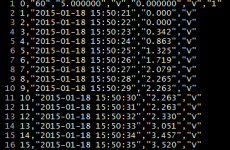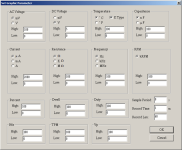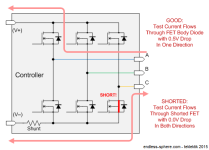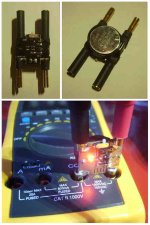An experiment in Cheapie Data Logging:spinningmagnets said:... I would like to know what my best DMM options are in the different categories for an upgraded second DMM. How much do I have to pay to accurately check individual cell voltages down to 0.01V? Can it be done with a $30-DMM?, $40, $50...?
A year or so ago I wanted to log some charger temperature data and so sprang for a TekPower DT9602R - another $50 DMM similar in features to the UNI-T UT61D. As I mentioned before, inexpensive autorangers are not my favorite, but this one does have a 'range' button so the readings are workably responsive if you dial in the range a priori.
As I said, the reason I went after the unit was data logging - a feature that has been called out in this thread for $600 meters. So - how do they do it for $50? Well - the meter doesn't actually save the data - it shoots it out an optically isolated RS-232 port and you hook up a PC and a little app saves the data. I found this to be an interesting approach that avoided paying for storage that I already have in my laptops.
Here's a snap of the little app they give you:

As you can see, this is just a straight dump of the LCD screen data - 4 digits of precision and a max sample rate slightly under a second but adjustable to any longer sample rate. The sample rate pretty much sucks for many logging applications, but for temperature or battery charge/discharge monitoring, it's fine. The generated log files can be pulled directly into Excel.

The app lets you configure/save ranges, etc for all the different meter LCD screens but lacks a means to purge data to start a second run from the 'zero count'. A PITA, but it's easy to either restart it or adjust the collected data in Excel. A more ambitious (or possessed) person could replace the app with their own - the transfer format is very simple.

In general the meter does what is claimed although I found the temp reading to be about 2 degrees high. This wasn't troubling enough to see if it could be adjusted out or if it was the supplied K thermocouple. For relative comparison purposes between runs it was just fine.
Anyhow - as I mentioned before, I prefer a simpler meter for common tasks and this one shows the sluggishness of autoranging and a busy little processor - probably not any worse than other autorangers in this price range. But, it does have 4 digit precision, comes with a temp probe, and the logger works on any LCD display setting - just add you own PC. For on-the-road monitoring tasks I use the Cycle Analyst with Analogger which picks up a dozen parameters five times a second, or use a logging CellLog for multi-cell-level voltage debugging, but this meter is pretty serviceable for the specific tasks of logging common (slow-changing) ebike stuff in bench experiments.
So - this is just sort of an FYI. There seem to be more than one unit in this price range with these capabilities - if you have similar logging needs or aspirations they might be worth checking out for $50 - even if it's just for specific dedicated use.
An alternative might be something like the DI-145 multi-channel USB analog data acquisition device, but I went the meter route for better or worse....




